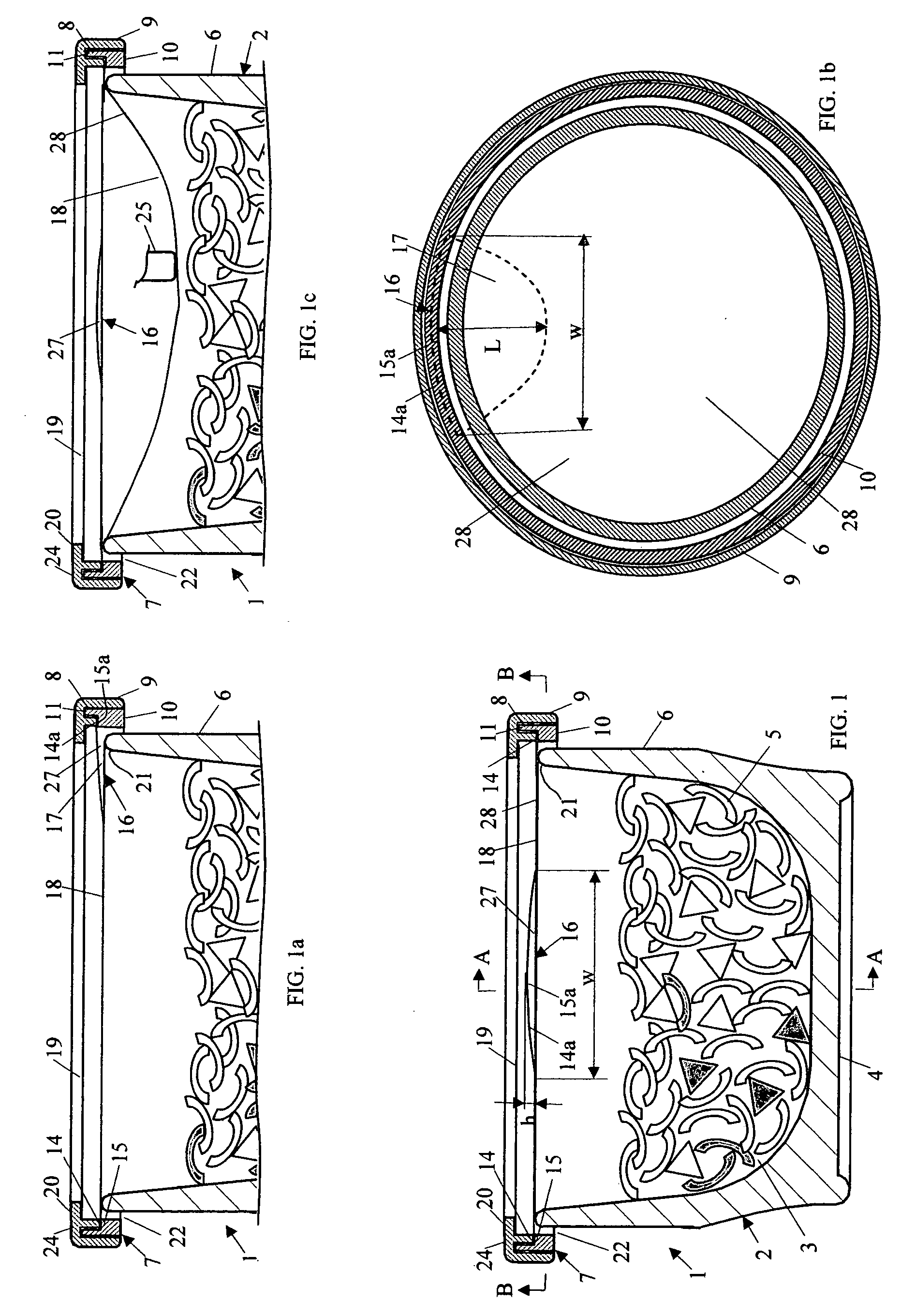Vacuum generating device for sealing perishable products and method of use
a vacuum generating device and perishable product technology, applied in the field of vacuum generating devices, can solve the problems of vacuum containers being susceptible to air leakage and plugging, too labor-intensive and complex methods for daily food storage, and expensive and unenvironmental friendly, and achieve the effect of facilitating the removal of the lid
- Summary
- Abstract
- Description
- Claims
- Application Information
AI Technical Summary
Benefits of technology
Problems solved by technology
Method used
Image
Examples
Embodiment Construction
[0041]FIGS. 1-1b show a vacuum generating device 1 having a vacuum lid 7 and a dish 2. The dish has a side wall 6, rim 21, bottom 4 and chamber 3 for receiving food 5. Lid 7 has an elastic and air impermeable membrane 18 having an outer seal section 28, a rigid rim 24 for adding strength to the elastic membrane 18 and enabling the membrane to generate vacuum in dish 2, and a valve-less air evacuator 16 formed between the seal section 28 and the rim 21 of dish 2 for releasing the air in the dish when the lid is being pressed and for causing the seal section 28 to seal to the rim 21 to prevent air from entering the dish when the lid is released.
[0042]The rigid rim 24 comprises an outer rim 9 having a continuous channel 8 around its peripheral and an inner rim 10 having an upper ridge 11 receivable in channel 8 for sandwiching and affixing the periphery of the seal section 28 between the inner and outer rims. The outer rim 9 further has an upper horizontal ring 20, an upper opening 19 ...
PUM
 Login to View More
Login to View More Abstract
Description
Claims
Application Information
 Login to View More
Login to View More - R&D
- Intellectual Property
- Life Sciences
- Materials
- Tech Scout
- Unparalleled Data Quality
- Higher Quality Content
- 60% Fewer Hallucinations
Browse by: Latest US Patents, China's latest patents, Technical Efficacy Thesaurus, Application Domain, Technology Topic, Popular Technical Reports.
© 2025 PatSnap. All rights reserved.Legal|Privacy policy|Modern Slavery Act Transparency Statement|Sitemap|About US| Contact US: help@patsnap.com



